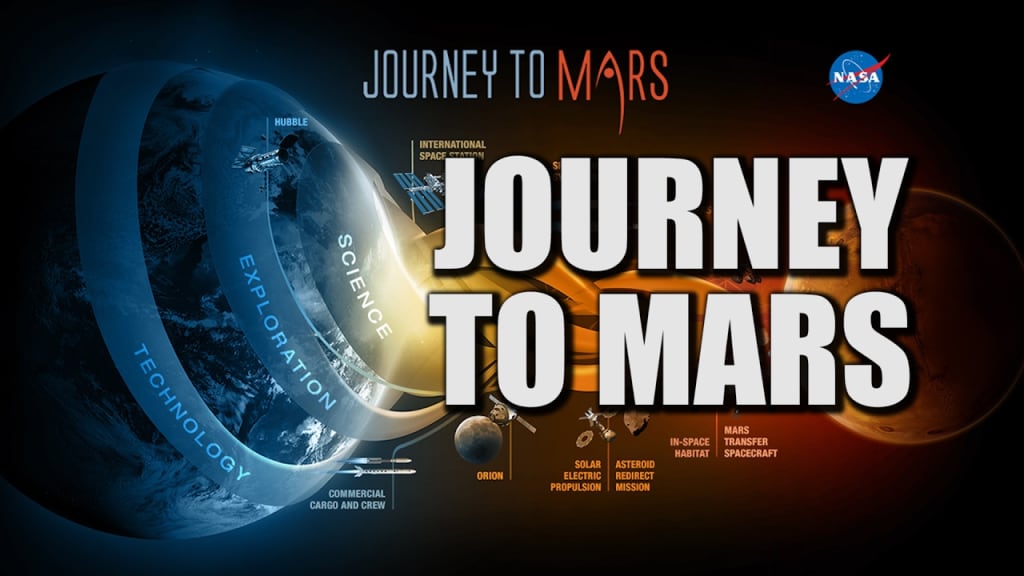
The spacecraft returning to Mars will have a re-entry speed of between 47,000 km / h and 54,000 km / h, depending on its return to Earth. Return to Mars must reach the rock and bring the crew up.
Samples of rocks and soil are stored in tubes to identify areas beyond the Martian that may be left behind for future Mars missions. NASA plans to work with the European Space Agency (ESA) in 2026 to launch a campaign that will restore 20% of its tubes to Earth by 2031.
The Space Center Houston, which is working with NASA to create a mission to Mars, has a tour guide taking NASA's trip to Mars, first looking at how our view of Mars has changed over the centuries. NASA not only provides insight into asteroids in our solar system and learns more about its early history, but also states that the purpose of asteroid redirecting represents an opportunity for scientists and engineers to deal with potential problems during the red planet.
A few years ago, NASA astronomer Scott Kelly and cosmonaut Mikhail Kornienko spent eleven months longer than usual on the ISS - a stay that has helped researchers assess the impact of long-range space missions - as a return trip to Mars NASA plans to complete by the end of 2030. The long-term goal of this project is to empower Red Cross-owned deployments.
The astronauts of the campaign to Red Planet will have to fight for a long time, progressively deep in the depths of the atmosphere, the effects of weight loss and the pressure of confinement and separation. It is also clear that any intention to go to Mars will be in the famous cemetery of the failed spacecraft.
NASA intends to visit Mars by 2030, but independence from Earth's resources will take decades. For years, NASA has spoken openly about its plans to launch a Red Planet-led campaign in early 2030. Such work would be machined to rewrite the scientific understanding of Mars.
In addition to NASA's proposed missions, there are efforts to recoup money to colonize Mars in the decades to come. In 2001, the European Space Agency proposed a long-term plan to ship man-made Mars missiles in 2033. The first mission of Mars, which would involve sending astronauts to Mars, orbiting the planet, and returning to Earth, was proposed by 2030.
Following the success of the Apollo program, von Braun promoted a man-made mission to Mars focused on NASA's space program. As one of the many layers of the human intelligence concept to test Mars, NASA has designed Reference Mission 3.0 (DRM-3.0) to promote critical thinking and development. Deep Space Transport (DST) [112], also known as the Mars Transit Vehicle, is a planetary NASA space program designed to support space exploration and exploration of Mars for thousands of days.
NASA's Space Launch System (SLS) is a high-powered, powerful rocket designed to send future explorers on Mars. The Mission to Mars exhibition is based on the 1 / 8th largest SLS model. It features the largest Space Launch Systems engine, the most efficient engine ever built. Seeing the red Martian hills and real plains to be explored by rovers on Mars, future rockets will launch from Earth and fly to Mars, where the astronauts will land.
Teams supporting the equipment have been able to keep their projects on track so far, but the coronavirus epidemic has disrupted many other programs, including European and Russian missions to Mars, postponed for two years. NASA hopes that its Mars campaign, a six-wheeled rover, three feet [3 m] long called Perseverance, will be the start of a much larger expedition. The investigation was the last to leave Mars, and all three machines arrived on Mars simultaneously in February.
In recent months, NASA has begun launching a variety of planned missions such as Mars' "stepping-stone" series. For example, a one-year campaign to go to the International Space Station will examine the effects of weight loss on the human body and explain what can be found in the devices made by Mars' astronauts, and how gravity can affect astronomy. a different league from a previous trip to space China, a team of researchers at the China Academy of Space Technology in Beijing wrote in a 2017 article (PJ Ye et al.
The final statistical model predicted that 33% of astronauts would be at risk of osteoporosis during Mars' missile missions. But animal cells receive radiation levels at the Mars mission level in a single session or series of exposure over weeks or months is not the same as continuous radiation exposure at lower levels. Emmanuel Urquieta, an aerospace researcher at Baylor College of Medicine in Houston, said through Mars' work that we do not know what will happen to humans if they are exposed to this disclosure.
Investigators and NASA officials have identified radiation as one of the biggest threats to Mars' space. HRP scientists and other researchers on Earth are trying to address the impact of these five levels of stress on human health and work in space activities by conducting Earth tests and monitoring the mental and physical health of astronauts aboard the International Space Station (ISS). Two major players, NASA and SpaceX, are working to be deployed to the ISS and are competing with ideas on what Mars-owned missiles might look like.
Five possibilities - a support route, an emergency route, and a modified flight path - are important, and years of careful planning have led to the selection of the Jeero Crater as a landing point for Mars and a well-planned route to ensure the spacecraft enters Mars into space.
About the Creator
Rashmi Dahal
Hello everyone!





Comments
There are no comments for this story
Be the first to respond and start the conversation.